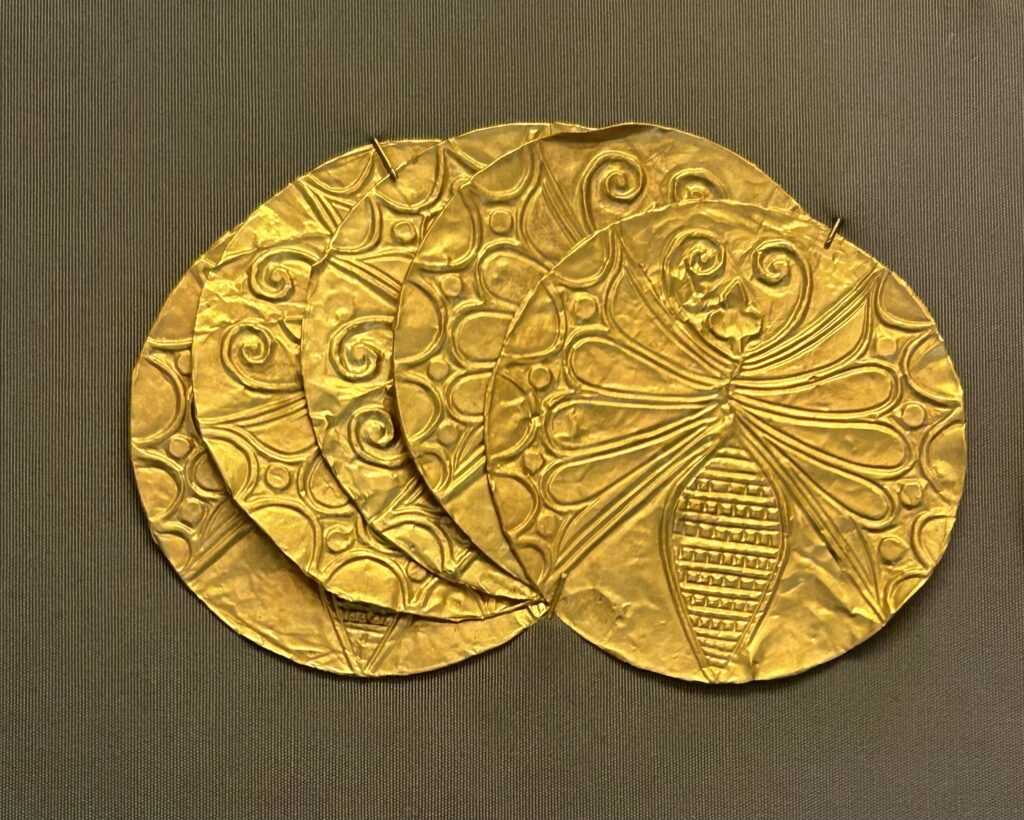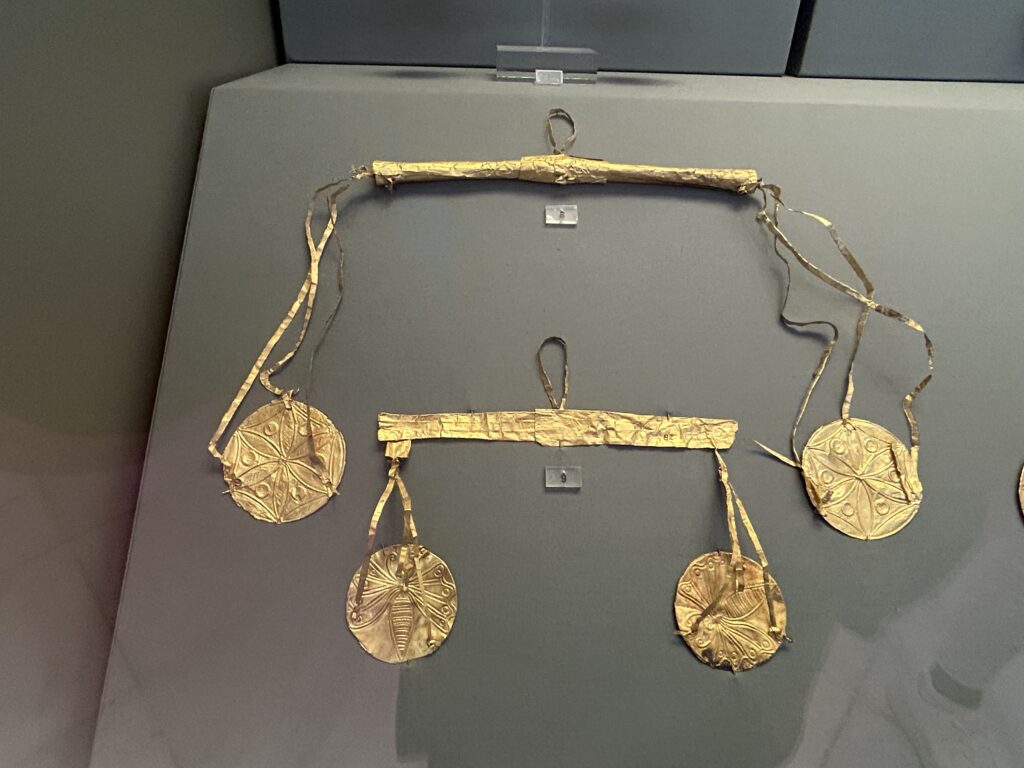Discovered within a grave on the citadel of Mycenae, during infamous Schliemann’s excavation of grave circle A, a number of curious gold disks were found.
Wafer-thin, they are decorated in repoussé with images of schematically rendered butterflies, allowing for considerable 15th century B.C. artistic license. In the same grave, were several delicate scales of gold foil with one (second picture) seemingly grasped between the fingers of an infant’s corpse (allowing for Schliemann’s famous artistic license) which was also sheathed in gold.


I am no Bronze Age specialist, so am more shy than usual (usually shameless) about interpreting these finds, but found the disks and scales incredibly moving. In the Iliad, there is a famous passage about Zeus weighing the souls of Achilles and Hektor to determine who would survive their brutal combat. And later in the Greek literary tradition, there are references to the weighing of souls (psychostasia) to determine their fate.
These unusual and whimsical butterflies, are an even more mysterious component, but certainly relate to the golden scales. The Mycenaeans were keen observers of nature, although sometimes clunkier in execution than the neighboring Minoans. Could they be a reference to transformation, rebirth, metamorphosis?




